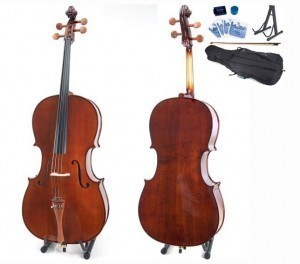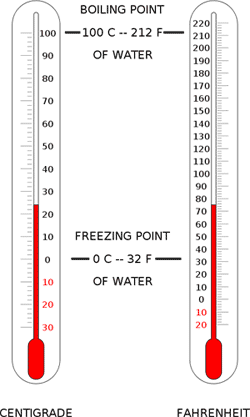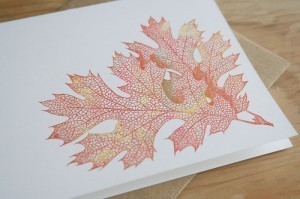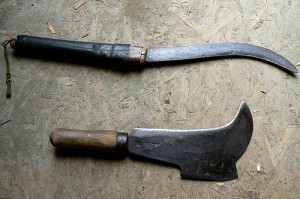Cello Dimensions
Although cello sizes may vary somewhat, the following list is a good gauge  of what you are likely to see in stores. The measurements provided are in inches. 1 inch is equal to 25.4 millimeters.
of what you are likely to see in stores. The measurements provided are in inches. 1 inch is equal to 25.4 millimeters.
Dimensions of Cellos (the European Standards)
For the 4/4 (or full body) size, the body length is 30 inches with a maximum width of 17.75 inches. The entire length is 48 inches. For the 7/8 size, the body length is 28.50 in with a maximum width of 17. The total length is 46.5 inches.
The ¾ size has a body length of 27.25 with a total length of 45 in. The width is 16. The ½ size has a body length of 26 in and a maximum width of 15 in, with a length of 42 in. The cello size ¼ has a body length of 23, a maximum width of 13.5 and a total length of 38.5 in.
The 1/8 cello has a body of 20 in, a width of 11.75 in and the entire length is 33.5 in. The smallest is the 1/10, which has a body length of 17.75 and a maximum width of 75. The total length is 29.5.
Dimensions of Cellos (the Suzuki Standard)
For the 4/4 or full body, the body length is 30 in. The width is 17.75 in and the total length has been measured at 48 in. Cello size ¾ has a body length of 26 in, a width of 15 in and a total length of 42 in.
The ½ has a 23 in body length; the width is 13.5 and the total is 38.5. The cello ¼ is 20 inches in body length with a width of 11.75 in. The total length is at 33.5 in. The smallest is the 1/8. It has a body length of 17.75, a maximum width of 9.75 in and a total length of 29.5 in.
How to Pick the Right Cello
Seat down and set the knees at a 90 degree angle. The cello’s upper rim should be on the breast bone or the sternum. The left knee should touch the curve at the lower bout corner. If the cello size is right the C string (the lowest) should be very near the left ear.
The neck should also be a few inches distant from the shoulder. If the distance is right, your left hand should be able to get to the fingerboards easily.
Other Information on Sizes and Accessories
Some cellos come in 1/16 sizes. The smaller models being released today are made especially for children. In terms of design and specifications they are similar to the larger ones, only scaled down.
Cellos also come with various accessories. Aside from the case, there is also the rosin. This is put on to enhance friction. The endpins are used to keep the instrument from sliding.
Picking the right cello size is not hard if the technique suggested above is used. By picking the right dimensions, you’ll be able to just concentrate on playing.





